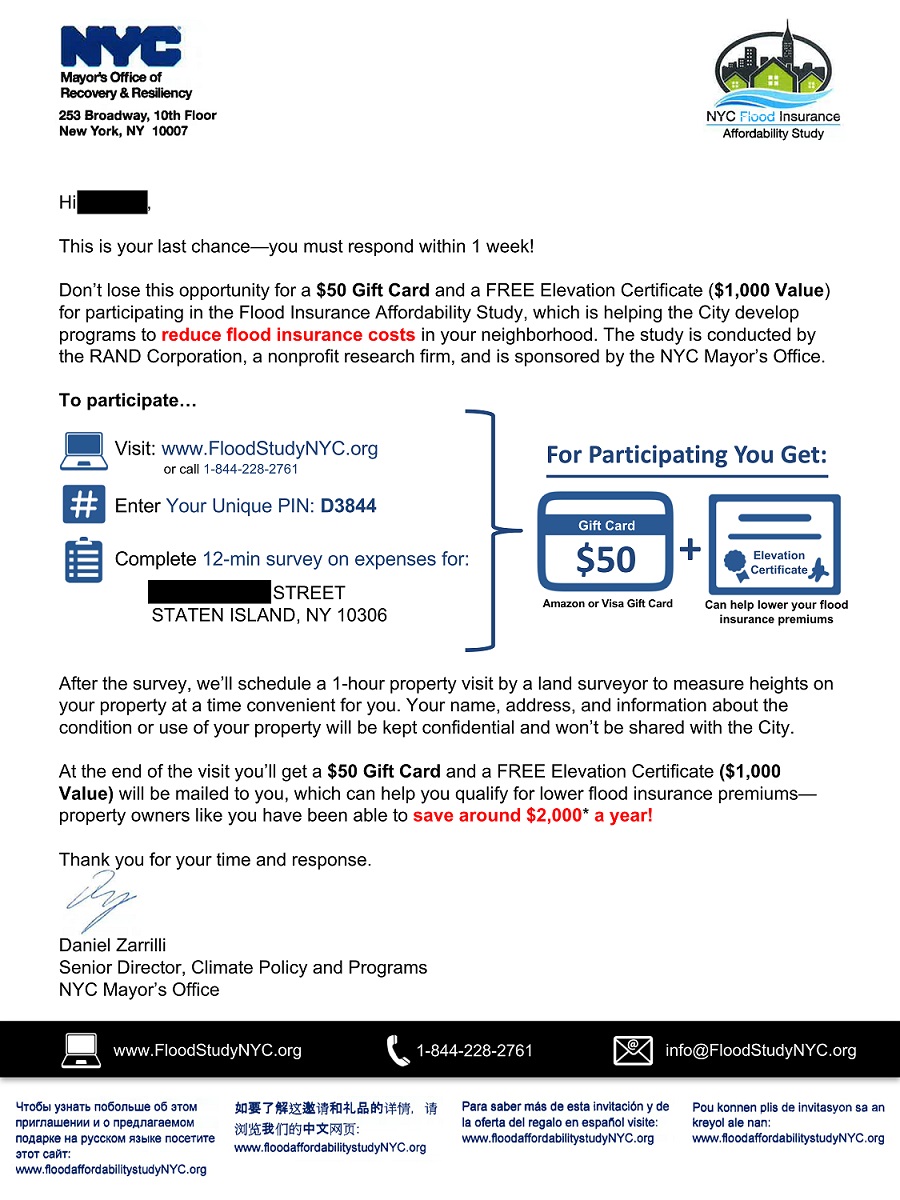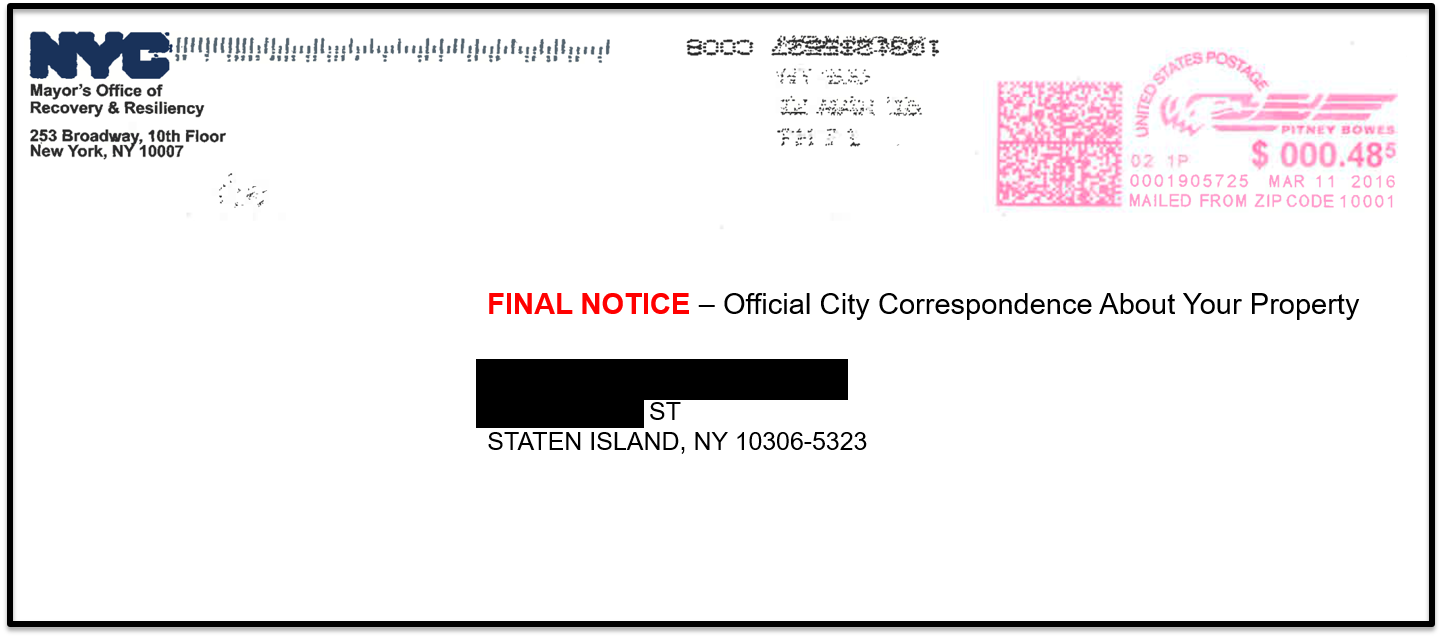
Boost Flood Preparedness with a Redesigned Letter
Organization : ideas42
Project Overview
Project Summary
The New York City Office of Recovery and Resiliency redesigned a letter to increase the participation rate in its Flood Insurance Affordability Study. The new letter was more personal, emphasized the benefits of participation, and made steps more manageable.
Impact
Households who had yet to complete the flood survey were 15.5 times more likely to complete it within two weeks if they received a redesigned “last chance” letter.
Cost
The redesigned letters had minimal additional costs because the city was already sending letters to eligible homes.
Source
Source
Challenge
Recent severe weather events have increased concerns about growing flood risk and the resiliency of households in the floodplain, prompting efforts to improve preparedness and insurance coverage. In 2016, New York City’s Flood Insurance Affordability Study aimed to gather more information from households in high-risk flood zones.
Homeowners selected to participate in the study were offered a $50 gift card to participate and an Elevation Certificate (valued at $1000) which may help lower flood insurance premiums. Despite these incentives, survey uptake was only 9 percent. This low response rate impeded the City’s ability to prepare for and respond to severe weather events.
Researchers worked with the New York City Office of Recovery and Resiliency to redesign a letter encouraging homeowners in high-risk flood zones to participate in the flood insurance affordability study.
Design
The new behaviorally-informed “last chance” letter was shorter and clearer than the original. It put the most important information upfront and used visual icons to allow for quick comprehension. The new letter grabbed the reader’s attention with a personalized greeting and seemingly handwritten signature. It also included a soft deadline, which would instill a sense of urgency. Icons and eye-catching fonts emphasized the immediate and long-term benefits of participating in the study, and mentions of confidentiality were less prominent.



Impact
A randomized control trial of 2,528 flood-prone households in New York City found that receiving a “Last Chance” letter increased rates of survey completion by 4.62 percentage points within a two-week period. Households who had yet to complete the flood survey were 15.5 times more likely to do so if they received the letter.
Implementation Guidelines
Inspired to implement this design in your own work? Here are some things to think about before you get started:
- Are the behavioral drivers to the problem you are trying to solve similar to the ones described in the challenge section of this project?
- Is it feasible to adapt the design to address your problem?
- Could there be structural barriers at play that might keep the design from having the desired effect?
- Finally, we encourage you to make sure you monitor, test and take steps to iterate on designs often when either adapting them to a new context or scaling up to make sure they’re effective.
Additionally, consider the following insights from the design’s researchers:
- The original letter overwhelmed property owners with information. Dense paragraphs made it difficult to understand the purpose of the study and how to participate. A simple reminder with clear action steps may have helped survey uptake.
- The original letter was two pages and placed the most important information at the end. By moving the most important information up-front, in a personal and attention-grabbing way, participants are less likely to experience attention fatigue.
- Important details about the value of the incentives (particularly the Elevation Certificate) were ambiguous, triggering avoidance and perhaps procrastination. The new letter clarified and emphasized the benefits of participation.
- Language in the original letter over-emphasized the confidentiality of information collected, potentially triggering negative associations with information provision. The revised letter no longer places a strong emphasis on confidentiality, which may have increased response rates.
- Writing a letter or email? Make sure to check out B-Hub’s Best Practices Checklist
Project Credits
Researchers:
Jonathan Hayes ideas42
Rachel Rosenberg ideas42
Check out this blog post about this project.


